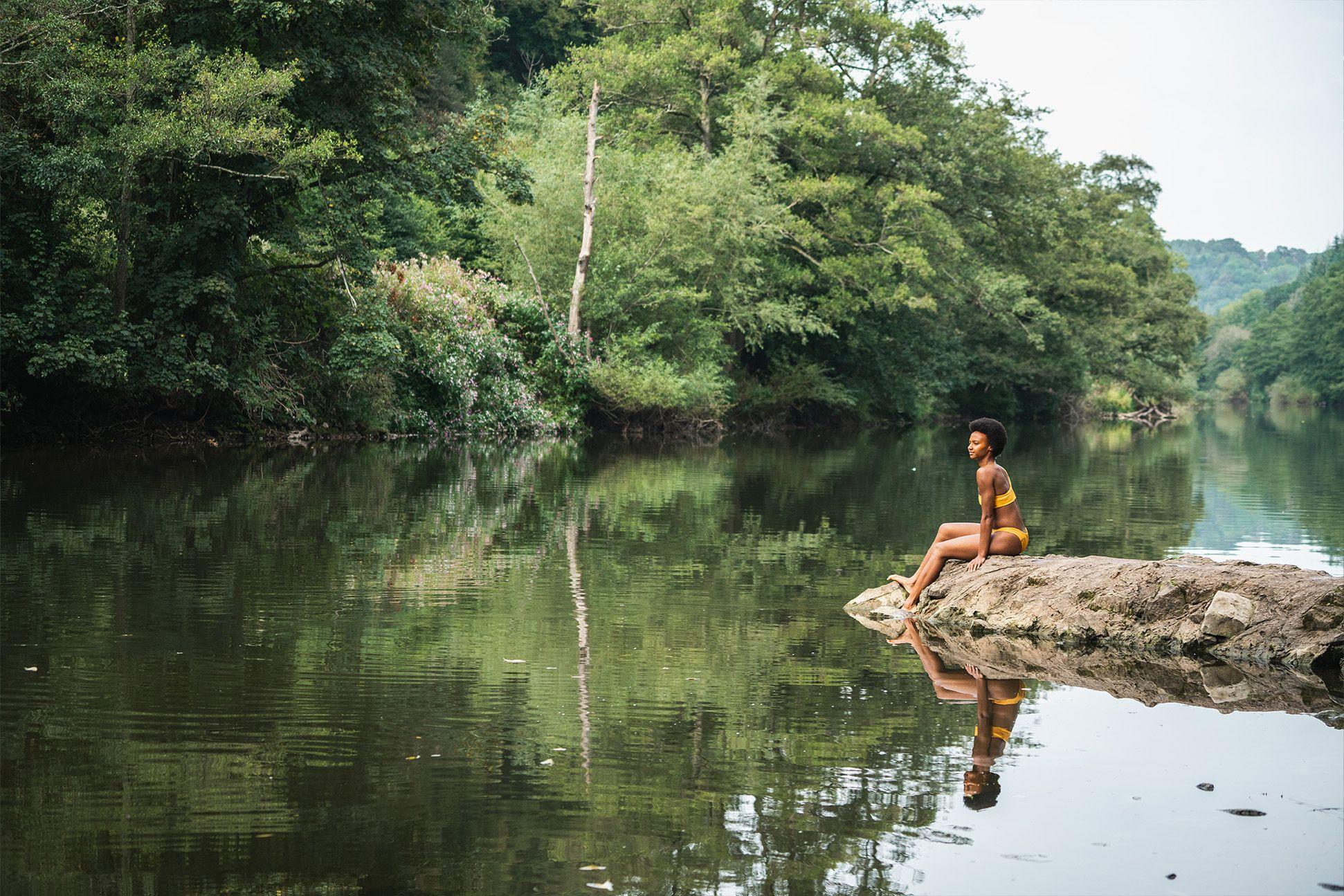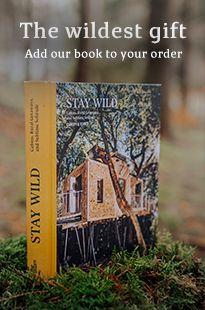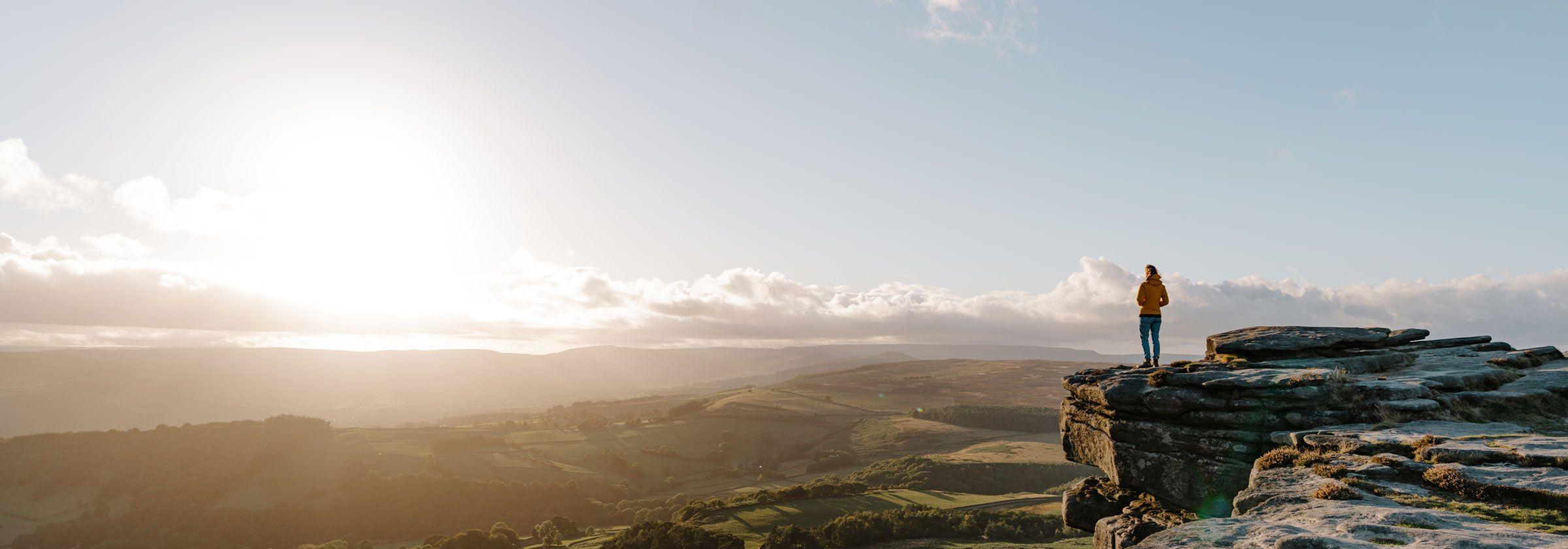
What is The Science of Awe and why you should be using it over winter?
If you’ve ever climbed a mountain, or even a particularly large hill – you’ll know looking out over the summit at the view below elicits a very unique feeling. Seeing the world stretch out to the horizon, how simultaneously massive and yet small the world is, how beautiful – it’s a unusual sensation we call awe.
And it’s not just mountain views, it could be looking up at the stained-glass windows of an epic cathedral, or even the massive expanse of the starry night sky. But did you know, it’s not just an amazing feeling – it actually has an amazing effect on the body and mind too?
So, what actually is awe?
Well, it’s tricky to actually outline, because how do you explain a complex emotion? What about love? Is the feeling of love you feel, the same as someone else’s? But using broad terms for the purposes of discussion, psychologists Dacher Keltner and Jonathan Haidt described it in a 2003 paper as both: “a perceived vastness” and a “need for accommodation”.
‘A perceived vastness’ is in essence the above example, so staring up at a giant starry night sky, realising the true size of the universe. And a ‘need for accommodation’ is the moment we feel that what we are seeing has broken our perception of the world.
For instance, if you hiked up Maes Knoll, a hill South of Bristol, you’d be much higher than the city of Bristol, which sits in a valley. Bristol is 11 metres above sea level, and Maes Knoll is 197 metres above sea level. From its lofty position, you can see all of Bristol at once, but not just that, you can see the bridges over the Bristol Channel that connect England to Wales, and on a good day, as far as The Black Mountains. Seeing this, your perception of how big Bristol is, or how far away Wales is (it’s two hours to the black mountains) – is shattered.
That’s rad, but, who cares?
A better question is more, what can it do for me? What’s most interesting about this is that like a muscle, our brains are trained to realise when they need to improve. The effect of awe is the brain realising it requires to be more complex to understand the situation or thing it is observing [1]. Much like a muscle tearing from the strain of a difficult workout and repairing stronger. This mind-expanding effect is called ‘increasing your neuroplasticity’ – and helps keep the mind healthy and young.
But does it stop there? No, not at all. In fact, the list is massive. Beyond increasing your neuroplasticity, it also seems to have measurable effects on the vagus nerve – which is part of the parasympathetic nervous system, helping to calm us down after stress by modulating our brain, heart, breathing and digestion. It even seems to improve vagal tone, meaning the effects are longer term than the single exposure [2].
Experiencing awe also seems to shut down our default mode network (DMN), a brain state in which we’re more introspective and aware of ourselves – potentially making us less self-conscious and prone to rumination [3; 4].
Whilst more research is needed to draw stronger conclusions, there’s also a suggestion that it may reduce bodily inflammation, reducing the risk of chronic disease. It may also increase oxytocin release, the feel-good chemical behind bonding, trust and love [2].
The list in fact, goes on, and on. There are stress benefits, physical benefits, prosocial benefits – even people feeling deeper connectedness to others. They have tendencies to act more ethically, positively and generously, and with a decrease in their materialism. There’s the suggestion that people who regularly experience awe in fact experience time more slowly, getting the most out of every minute. To put it really simply, there’s an increase in life satisfaction [5].

So, anyone can get the benefits of this?
Pretty much. The work into this field is relatively new, and still requires further research, but that which has been studied is looking very promising and positive.
There are some caveats, mostly that certain people will experience it differently, or to varying degrees of intensity. This can depend on the person, or something a little more macro like the culture they’re from. For instance, people from the USA were more likely to be in awe of personal accomplishments than people themselves, unlike China, where collectivist culture puts the precedent on the person.
Which leads us to the next question...
It’s not just sunrises and starscapes? People can be in awe of people?
Technically, yes. The criteria for what elicits awe can be pretty wide, and in fact, there’s a kind of awe that’s a little scary – for the purposes of this simple article, we’ll consider that the dark side of awe, and that you’re unlikely to experience it. But on the positive side, yes, it can be visual experiences, it can be music or art, it can be being in awe of another person.
The most important one to consider however, is nature, because nature is free, open 24/7, and already has a host of other benefits.

Where can I find awe on Google maps?
Most of the research on this subject has been conducted by one man over the course of decades, Dr Dacher Keltner, an American professor at The University of Berkley (and it’s pretty easy to trust his advice, given how great he looks for 61 years of age).
In an interview with The New York Times, he discusses how during the course his research, Keltner went to San Quentin State Prison, and heard inmates speak about finding awe in “the air, light, the imagined sound of a child, reading, spiritual practice.” This then led to him realising “’…Oh I can just take a breath and look around.’ It doesn’t require privilege or wealth; awe is just around us”.
Whilst there’s no denying that heading to the summit of Ben Nevis is an arduous physical task, but arguably an easy way to experience awe – it’s not actually necessary. And whilst “studies have found that natural scenes are frequent awe elicitors” [5] they actually don’t need to be physically large to elicit awe. In turn, whilst there are granted a few different factors to consider, people who are open to new experiences are more likely to experience it, as well as wiser people. In fact, “one’s tendency to experience awe is correlated with a number of other positive character traits, such as appreciation of beauty, creativity, and gratitude.” [5]
Hold the heck on, you said winter, where do I find awe in sideways rain?
Awe is waiting for you, pretty much wherever you’re open minded enough to find it. Whilst winter doesn’t have the technicolour splendour of autumn, the bursts of new life of spring, or the gentle heat of a summer’s evening, beauty in winter is relatively easy to find. The first step would be to consider taking an ‘awe walk’, a kind of mindfulness exercise that can be practised anywhere, at any time. Even if, for you, that's in the garden, the local park, or the greenest commute to work you can possibly find.
To take this practise even further, winter still has many options to explore. You can go in search of evergreen forests, where colour still clings to the pine trees, you can go walking in the countryside and spot all the animals still circling, swooping and prancing. Wildlife parks, SSSIs and national parks are still all open, with their vast beauty to visit – entirely free. And of course, the ocean, epic, timeless and ever-comforting will still be found at our shores, regardless of how wind beaten you’ll get strolling up and down the beaches.
In summary, you’re most likely to experience this awe if you are largely already positive about going out to experience new things, and winter is often where these kinds of mental health benefits really count – when the cold and the dark does nothing for your mood and outlook. By going outside and living a life more wild, we can find awe in our daily lives, perhaps in something as simple as a walk – just so long as you remain open to it.
Other articles you might like
For those interested in the science...
- Awe, The Small Self, and Prosocial Behaviour (Journal of Personality and Social Psychology)
- Awe as a Pathway to Mental and Physical Health (Perspectives on Psychological Science)
- Neural Representations of Awe: Distinguishing Common and Distinct Neural Mechanisms (Emotion)
- The Default Mode Network and Rumination in Individuals at Risk for Depression (Social Cognitive and Affective Neuroscience)
- The Science of Awe (Greater Good Science Center)







